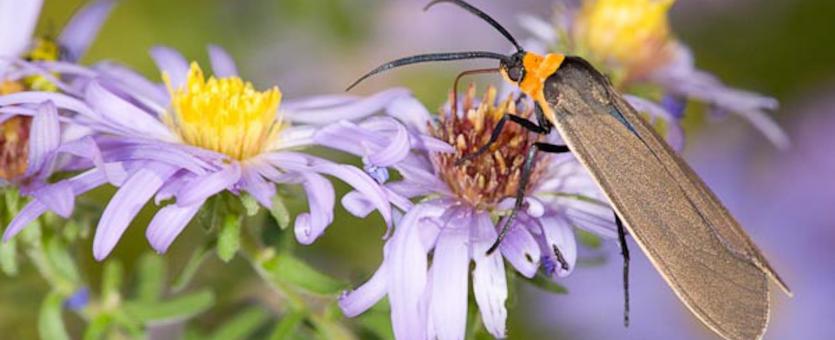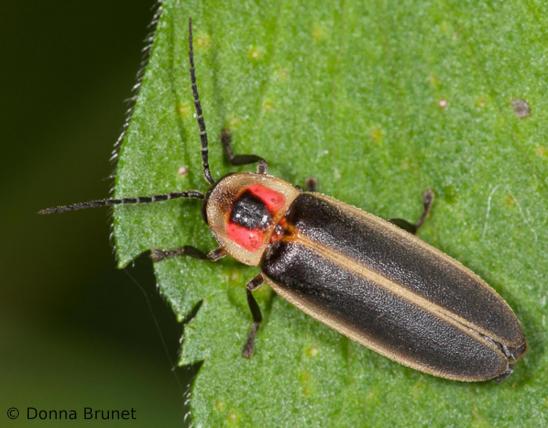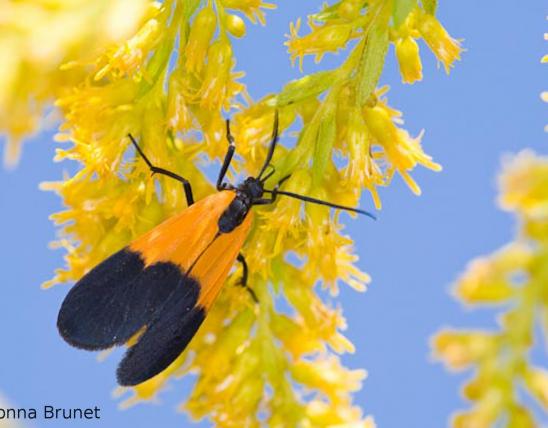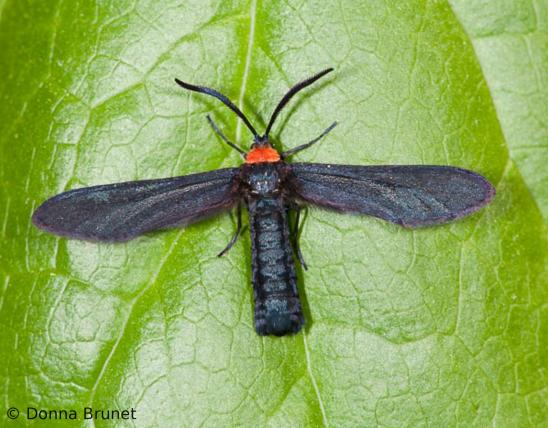Media

Scientific Name
Cisseps fulvicollis
Family
Erebidae (tiger, lichen, tussock, and underwing moths)
Description
Adult yellow-collared scape moths have black forewings. The hindwings (usually covered by the forewings) are translucent in the middle; sometimes the patch looks whitish or bluish. The body is all black, or bluish-black, except for the bright orange (sometimes yellow) “collar.”
Larvae have numerous tubercles bearing hair tufts. The body is brownish with a dark line down the back, a broken orange and yellow line to either side of it and a broader line below that. The head is orange with brownish shading.
Size
Wingspan: 1–1½ inches.
Where To Find

Statewide.
Habitat and Conservation
The adults are frequently seen as they visit flowers during the day. They are also attracted to lights at night. They can be found in virtually any Missouri habitat, but if you are looking for them, start in fields, prairies, parks, and yards with plenty of flowers.
Food
Larvae feed on grasses, lichens, and sedges. The adults drink nectar from a variety of flowers, including many in the sunflower family, such as asters and goldenrods, as well as milkweeds.
Status
Widespread.
Life Cycle
Life Cycle
Adults fly from late April until the freezing weather of autumn.
Human Connections
There are about 3 species of scape moths in North America. But what is a “scape”? It is a kind of stalk, or shaft — like the leafless stem of a tulip that rises directly from the ground. This group of moths seems to have been named for a long, scapelike stalk at the base of each antenna. (Sometimes learning about nature teaches you about language!)
Ecosystem Connections
The caterpillars are herbivores that graze on vegetation. The adults serve a role in pollination. This species might garner some protection from predators by mimicking wasps or bad-tasting beetles. It might also acquire some toxicity itself when it gathers nectar from plants with toxic chemicals.
Title
Media Gallery
Image

Caption
The yellow-collared scape moth is more often “orange-collared.” And whether you think it looks more like a firefly or a wasp, it’s still a moth!
Credit
Donna Brunet
Right to Use
Image

Caption
Yellow-collared scape moth gathering nectar from native asters.
Credit
Julianna Schroeder
Right to Use
Image

Caption
Adult yellow-collared scape moths are frequently seen as they visit flowers during the day. They look a lot like lightning bugs.
Credit
Julianna Schroeder
Right to Use
Image

Image

Image

Title
Similar Species
About Butterflies and Moths in Missouri
Butterflies, skippers, and moths belong to an insect order called the Lepidoptera — the "scale-winged" insects. These living jewels have tiny, overlapping scales that cover their wings like shingles. The scales, whether muted or colorful, seem dusty if they rub off on your fingers. Many butterflies and moths are associated with particular types of food plants, which their caterpillars must eat in order to survive.

































